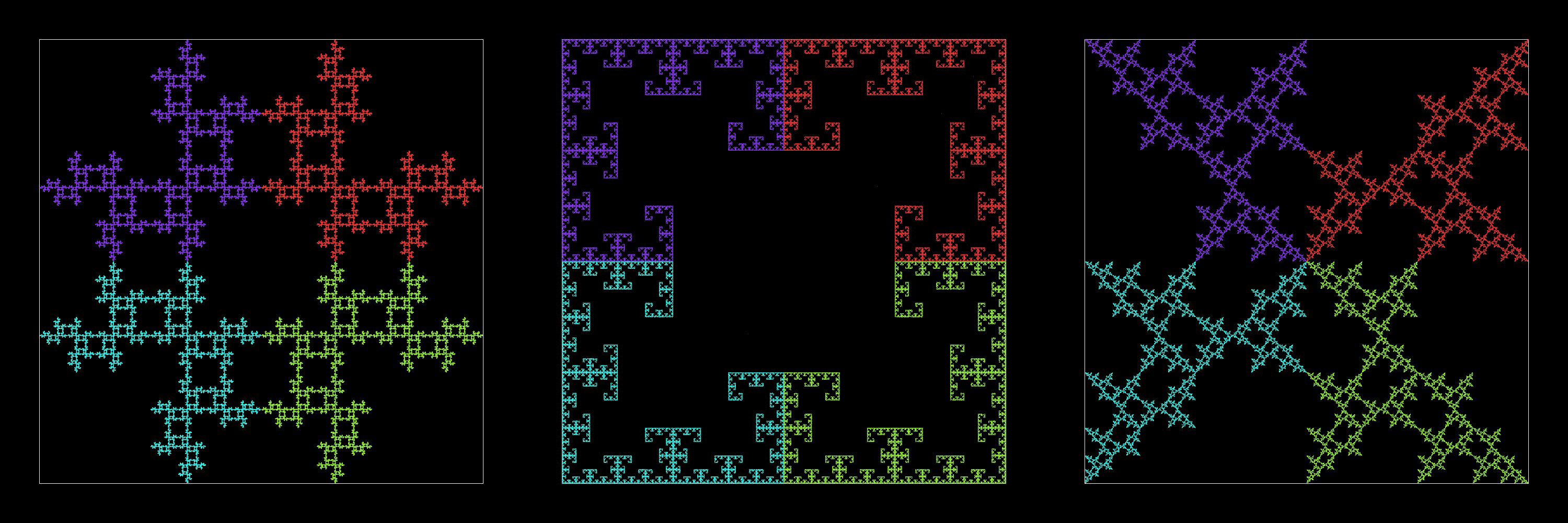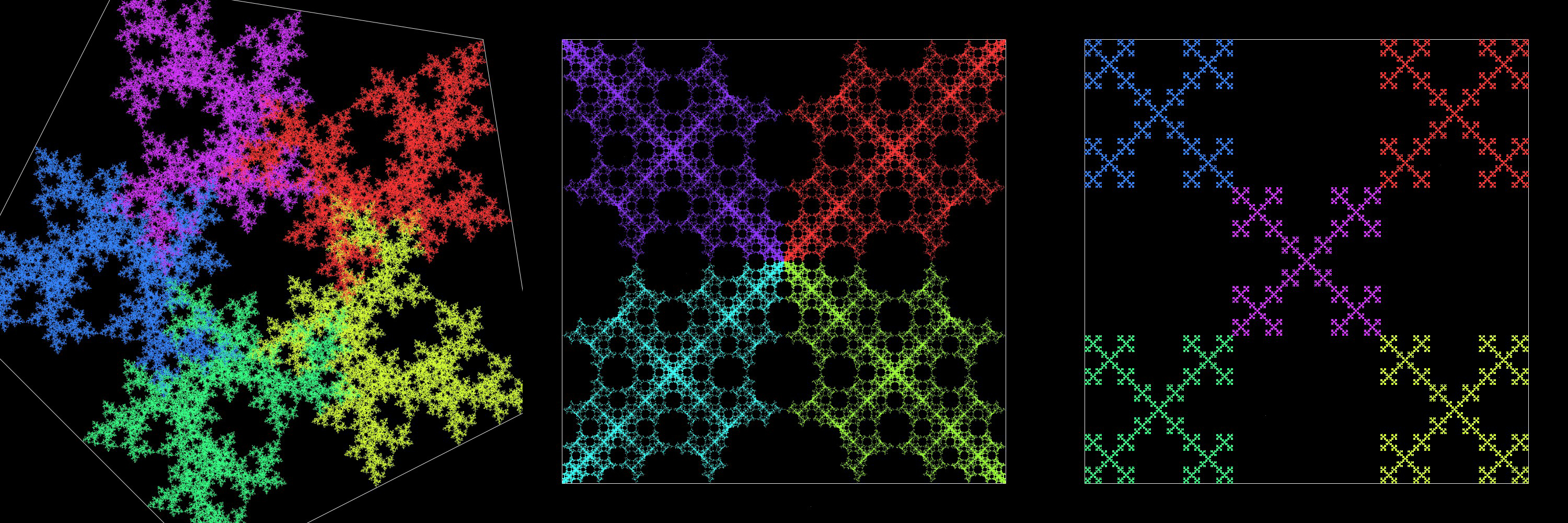
Fractals that Rise from Chaos Game
In mathematics, the term chaos game originally referred to a method of creating a fractal, using a polygon and an initial point selected at random inside it.
The procedure to create a fractal can be split into three steps:
- The chaos game start from one arbitary point and several verticies located on the 2D surface (we can extend to higher dimension later)
- Choosen one vertex based on game rule and move the starting point towards the chosen vertex by a fixed propotion of distance and mark the point after transformation
- Repeat former two steps endlessly. If verticies and rules are set properly, the fractal would appear with iteration accumulation
One of the basic settings is to choose three vertices and the starting point from one of these three verticies, and each time choose one arbitary vertex and move \(\frac{1}{2}\) distance towards that vertex.
Then, following the procedures, you would see Sierpinski Triangle appear gradually. (intuitive gif copied from wikipedia)

Applying More Rules
By altering number of verticies and rules of selecting next vertex, we can create a variety of fractals.
The following three are settings of four verticies each with the rules of not being able to pick the same, the second next, and the next vertex for the next pick:

Moreover, we can have more verticies, more complicated rules or even alter the travel distance for the moving staring point.
- The left one is setting of five verticies and not allowing picking same vertex twice.
- The middle one is four verticies while the next pick cannot neighbour previous pick if two previous picks are the same.
- The right one is four verticies plus the center of the square. Five verticies in total with travel distance of \(2/3\).

Chaos Game in 3D
Although we need to consider much more in 3D space, the basic idea is just to move all the rules from 2D to 3D in a transformative way.
For instance, to construct a Sierpinski Triangle in 3D (or Tetrahedron), we need four corresponding verticies with a 3D vertor jumping in 3D space. Then, 3D version of it would gradually appear. Here is my recording with virtual camera and fixed filming angle:
Core Code Logic
This is the core logic code for 4 verticies with rules of not allowing the second next vertex for next pick.
Also, you can customize the code as you want and find you own special fractal. You can also check my github repo for more variations:
PVector[] points;
int numberOfNodes = 4;
float percent = 0.5F;
PVector current;
int previous;
public void setup() {
size(1000, 1000);
points = new PVector[numberOfNodes];
colorMode(HSB);
background(0);
stroke(238);
translate(width / 2, height / 2);
for (int i = 0; i < numberOfNodes; i++) {
float angle = i * TWO_PI / numberOfNodes;
points[i] = PVector.fromAngle(angle - PI / 4);
points[i].mult(600);
if (i > 0) {
stroke(0, 0, 238);
line(points[i].x, points[i].y, points[i - 1].x, points[i - 1].y);
}
}
line(points[0].x, points[0].y, points[points.length - 1].x, points[points.length - 1].y);
current = new PVector(random(width), random(height));
strokeWeight(4);
}
public void draw() {
translate(width / 2, height / 2);
for (int i = 0; i < 1000; i++) {
strokeWeight(1);
int r = (int) random(points.length);
stroke(255 / numberOfNodes * r, 200, 255);
PVector next = points[r];
if (r != (previous + 2) % 4) {
current.x = lerp(current.x, next.x, percent);
current.y = lerp(current.y, next.y, percent);
point(current.x, current.y);
previous = r;
}
}
}